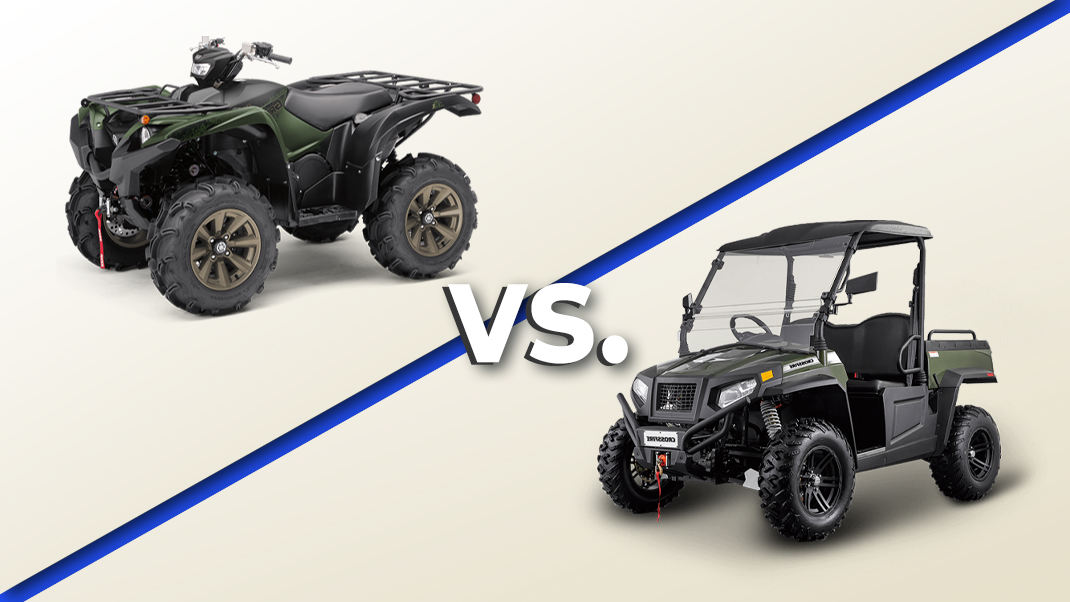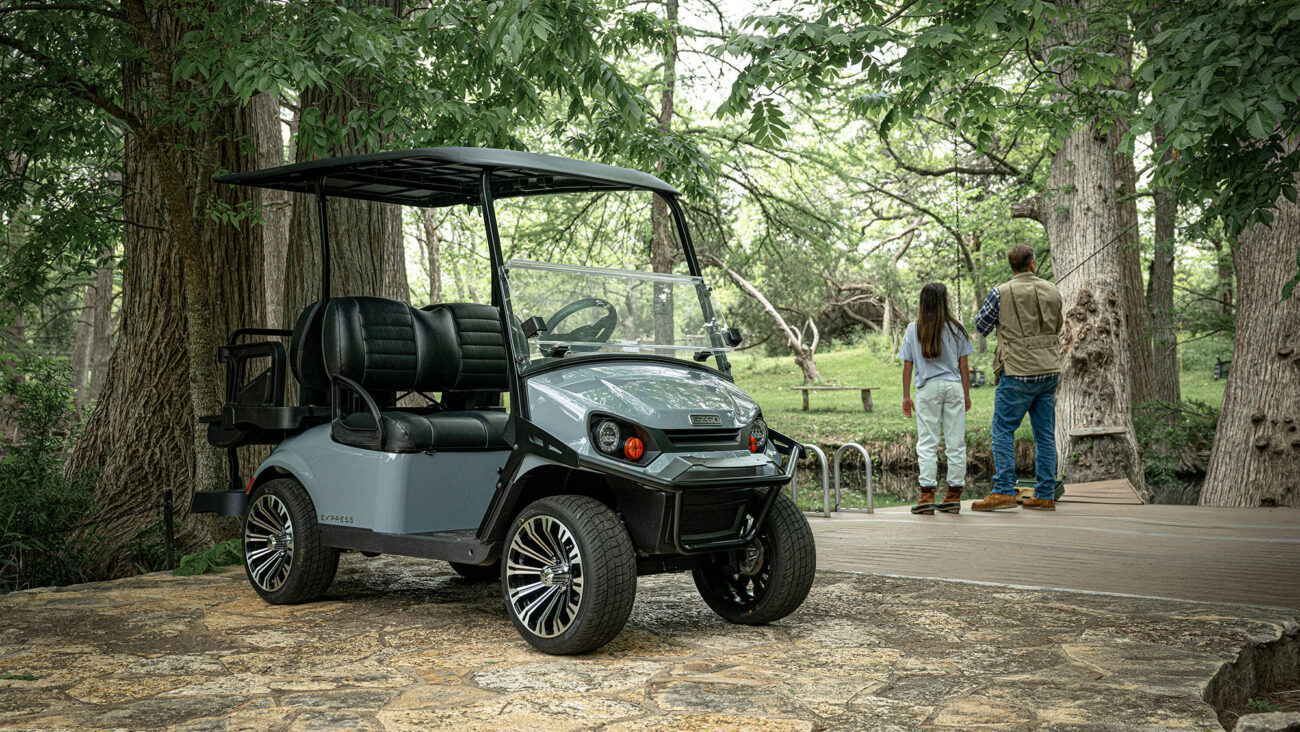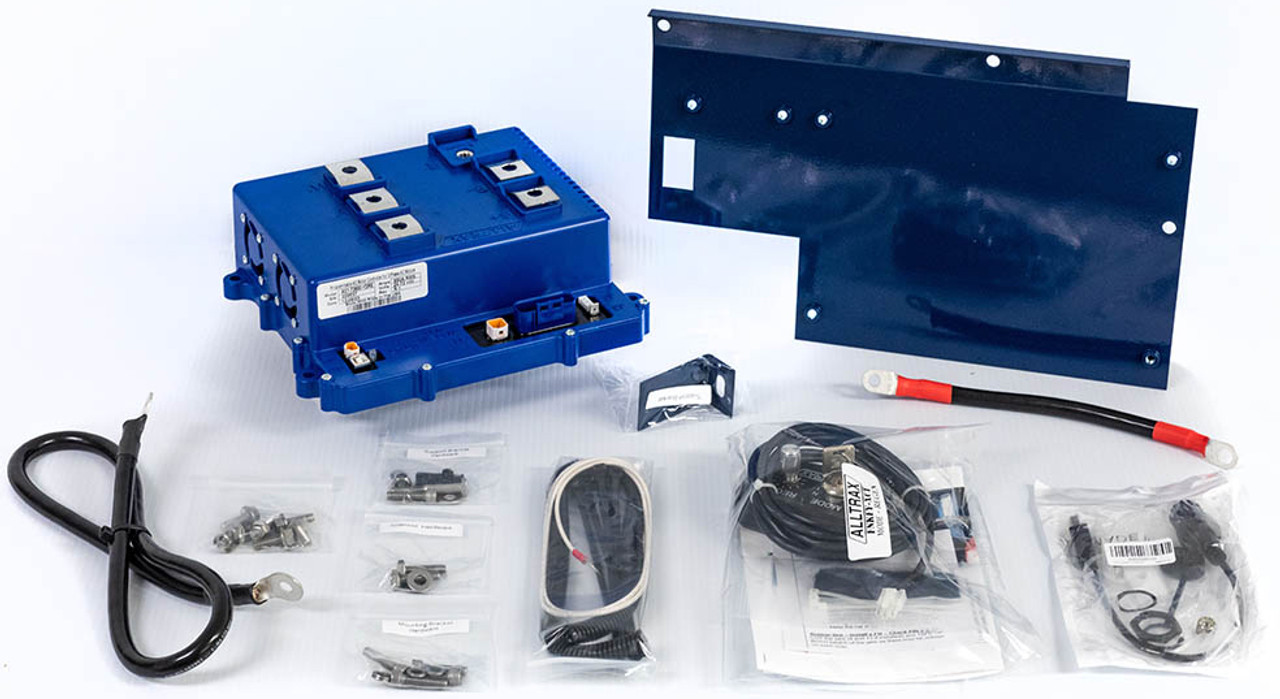
UTV vs ATV: Key Differences and Features Explained
Both UTVs and ATVs are popular off-road vehicles. Learn about the key features, similarities, and differences between UTVs and ATVs to help you choose the right one for your needs.
What Is an ATV (All-Terrain Vehicle)?
An ATV (All-Terrain Vehicle) is a versatile off-road vehicle designed for handling a variety of rugged terrains. These vehicles are often referred to as quad bikes due to their four wheels, and they are typically designed for a single rider. ATVs are popular for recreational off-roading, farming, hunting, and other outdoor activities. Their design allows them to navigate challenging terrains such as mud, sand, snow, and rocky paths.
ATVs are lightweight, compact, and built for speed and maneuverability. They offer excellent handling and are often used for fast-paced activities like racing or trail riding. The ability to navigate tight spaces and rough terrain is one of the key advantages of ATVs.
What Is a UTV (Utility Task Vehicle)?
A UTV (Utility Task Vehicle), also known as a side-by-side, is a larger off-road vehicle designed to carry passengers and cargo. Unlike an ATV, which is typically built for one rider, a UTV can seat two to six passengers, making it ideal for group outings or work-related tasks. UTVs are often used for recreational activities like off-roading, as well as for utility purposes such as farming, construction, and maintenance.
UTVs are typically equipped with a steering wheel, pedals, and a more extensive suspension system compared to ATVs. They can handle rougher terrains and are better suited for carrying heavier loads. UTVs offer more stability, comfort, and safety features, such as seat belts and roll cages, making them ideal for work environments or family outings.
Similarities Between UTVs and ATVs
While UTVs and ATVs are designed for different uses and have distinct features, they do share several similarities:
- Off-Road Capabilities: Both UTVs and ATVs are built for off-road use and can handle a wide variety of challenging terrains, such as dirt trails, mud, sand, and snow.
- Durability: Both vehicles are designed to withstand harsh environments and rugged conditions. They are built with durable frames, robust tires, and powerful engines to ensure reliability on rough terrain.
- Power Sources: Both UTVs and ATVs are typically powered by gasoline or electric engines, although gasoline models are more common.
- Outdoor Recreation: Both types of vehicles are popular for outdoor recreational activities, including off-roading, trail riding, hunting, and camping.
Differences Between UTVs and ATVs
Despite their similarities, there are significant differences between UTVs and ATVs that make each better suited for specific uses. Here are some of the key differences:
1. Seating Capacity
One of the biggest differences between ATVs and UTVs is the seating capacity. An ATV is typically designed for a single rider, although some models can accommodate two riders. UTVs, on the other hand, are designed to carry multiple passengers, with most models seating between two to six people. This makes UTVs a better option for families, group outings, or work situations where more than one person needs to be transported at a time.
2. Handling and Maneuverability
ATVs are smaller, lighter, and more agile than UTVs. This makes them ideal for navigating tight spaces, narrow trails, and fast-paced off-road activities. Their lightweight design allows riders to easily shift their weight and maneuver the vehicle through challenging terrain. In contrast, UTVs are larger and heavier, which makes them less nimble but more stable on rough terrain. UTVs are better suited for carrying loads and passengers over long distances.
3. Cargo Capacity
UTVs are specifically designed to handle heavy loads. Many models come equipped with cargo beds or racks, allowing users to transport tools, supplies, or other equipment. This makes UTVs ideal for tasks like farming, construction, or trail maintenance. ATVs, on the other hand, have minimal cargo capacity and are primarily designed for recreational use. Although there are accessories available to add cargo racks to ATVs, they are not as efficient as UTVs when it comes to hauling heavy or bulky items.
4. Speed and Power
ATVs are generally faster than UTVs due to their smaller size and lighter weight. Most ATVs can reach speeds of 40-60 mph, with racing models capable of even higher speeds. UTVs are typically slower, with top speeds ranging from 30-50 mph, depending on the model. UTVs are designed for stability and carrying capacity rather than speed, making them better suited for tasks that require power and durability over speed.
5. Safety Features
UTVs tend to have more safety features than ATVs. Many UTVs come with roll cages, seat belts, and other protective features to keep passengers safe in case of a rollover or collision. The additional stability provided by UTVs also reduces the likelihood of tipping over compared to ATVs. While ATVs are fun and fast, they do not offer the same level of protection for riders. ATVs typically do not come with roll cages or seat belts, and their higher risk of tipping can be a safety concern for some users.
6. Use Case
ATVs are generally used for recreational activities, such as trail riding, racing, and exploring remote areas. They are perfect for solo riders or small groups who want to experience the thrill of off-roading. UTVs, however, are more versatile and can be used for both work and recreation. Their ability to transport multiple passengers and carry heavy loads makes them ideal for farming, construction, landscaping, and other industrial applications.
Which One Should You Choose: UTV or ATV?
When deciding between a UTV and an ATV, the best choice depends on your specific needs. If you’re looking for a vehicle for solo adventures, fast riding, and navigating narrow trails, an ATV is a great option. It offers greater maneuverability, speed, and excitement for those who enjoy fast-paced outdoor activities.
On the other hand, if you need a more practical vehicle for work, transporting passengers, or hauling equipment, a UTV is a better choice. With its greater stability, cargo capacity, and ability to carry multiple passengers, a UTV is perfect for business use or family outings.
Conclusion
Both UTVs and ATVs offer unique advantages depending on your intended use. While ATVs are ideal for recreational activities that require speed and agility, UTVs are better suited for tasks that require carrying passengers and cargo. By understanding the key differences between UTVs and ATVs, you can make a more informed decision about which vehicle is best for your needs. To explore a wide range of UTV and ATV options, visit our UTV and ATV selection for the perfect off-road vehicle for you.





Add a review
Your email address will not be published. Required fields are marked *